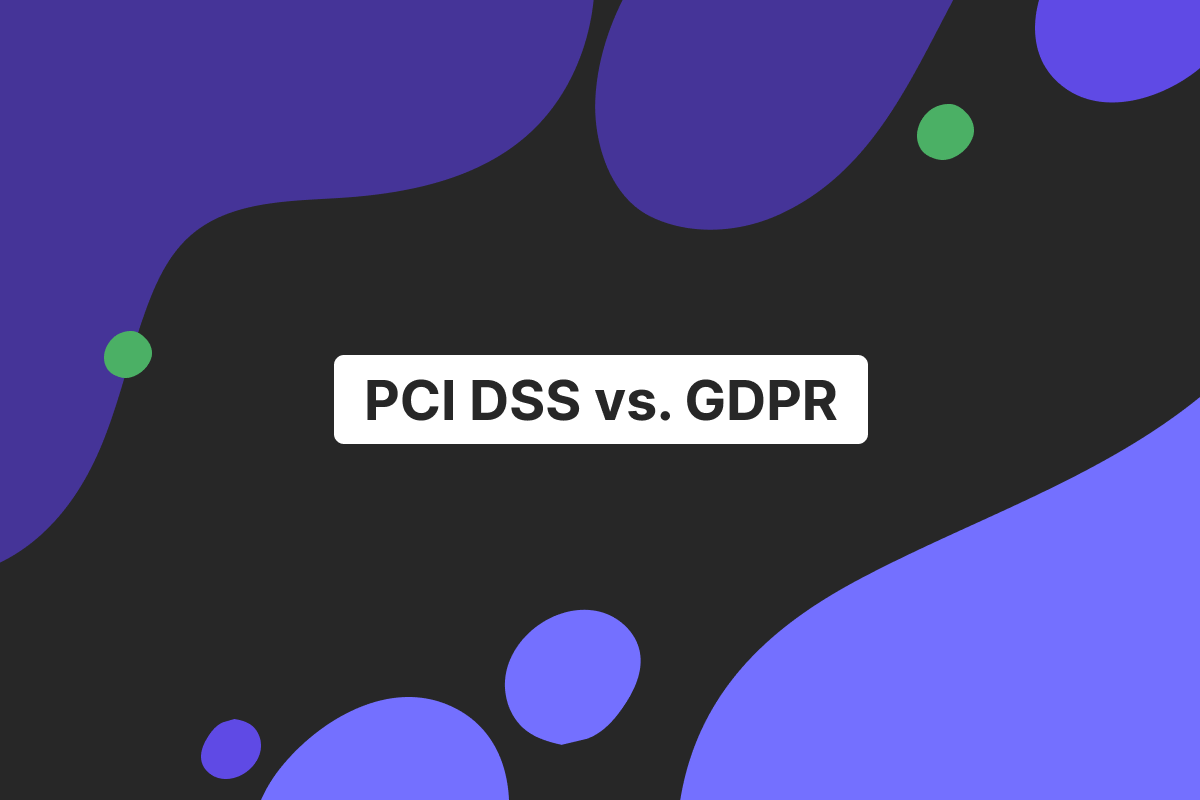The article was updated on 19.06.2024
At first glance, the term cash flow (CF) seems very straightforward. However, there are many intricacies surrounding it. Not to mention that different types exist, and people/companies need to follow specific advice to manage them.
Genome’s team has prepared an article covering the main things about cash flows you should be aware of.
What is cash flow?
Cash flow refers to the movement of funds into and out of personal or business bank accounts. How cash moves can be divided into two subcategories:
Cash inflow is funds received by a person or a company. Multiple sources generate the inflow, such as investment income, revenue from goods sold, and simply an income from your workplace.
Cash outflow is when a person or a business incurs expenses or makes cash payments. These include purchases, employee payroll, taxes, operational costs, etc.
We should also mention the term “net amount,” which is the difference between the total inflows and outflows over a specific period of time.
When inflows exceed outflows, it is called a positive cash flow. Meanwhile, a negative cash flow occurs when outflows exceed inflows.
Types of cash flow
All movements of funds can be divided into several cash flow types, usually found in business cash balances.
1. Operating cash flow
Operating CF represents money inflows and outflows a company generates through its general operating activities. These are day-to-day finance operations, such as selling goods or providing services, after accounting for expenses related to those operations.
Example: A clothing manufacturer created and sold a new spring collection in stores.
This metric can help you determine how successful your company is and adjust your business strategy if necessary. The company needs to be self-sufficient, and reaching a healthy balance between inflows and outflows is one of the steps to achieve this.
Open an account
in Genome online
2. Investing cash flow
This type is linked to the funds a company generates from investments or expenses into investment assets. Such CF doesn’t correspond with general operations but results from buying/selling property, equipment, securities, etc.
Example: A farmer sells a piece of land as it no longer brings in the desirable profit. The money he receives will be considered an investment.
Investing can play a pivotal role in establishing your business as an innovator in the market. However, you will need to keep track of how successful your investments are: if they bring more money and how they impact the overall profit.
3. Financing cash flow
This type is linked to a company’s financial activities. It is a movement of funds between a business and its investors, owners, and creditors. Examples include financial obligations, raising capital, distributing dividend payments to shareholders, etc.
Example: A tech company wants to expand and needs to raise capital. It starts offering 12,000 new shares to potential investors. The money it receives is an inflow from financing.
Overall, this type balances the mix of debt and equity, affecting the company’s financial stability. This metric must also be tracked to achieve a healthy balance between risk and return for shareholders.
Importance of cash flow
Avoiding cash flow issues and managing it properly is essential for several reasons:
Ensuring business liquidity to cover short-term financial obligations and unexpected expenses;
Facilitating day-to-day operations – your regular expenses to run the business and pay employees.
Creating a base for decision-making when getting beneficial investment opportunities and managing expenses based on a cash flow forecast.
Assessing financial health and stability based on the financial performance of your business. The finance assessment is also crucial for planning a future cash flow.
How cash flow works
A cash flow cycle represents the movement of funds inside a business. To better understand it, let’s take a business that manufactures and sells clothes online as an example and see how it goes through this cycle in one month.
Starting balance. A month starts, and the business has a balance of €250,000.
Inflows. Throughout the month, the business gets revenue from goods sold – an inflow of €120,000. The business receives more cash as a result of a successful investment in the development of its white-label order-tracking technology – €203,000.
Production/inventory management. The business also needs to spend a certain amount of cash. It purchases raw materials for clothes manufacturing for €59,000.
Collection of receivables. By the end of the month, the business also receives money from clients who’ve bought clothes on credit (plus €34,000).
Outflows. The business needs to pay salaries to employees (€87,000) and pay for renting the office (€48,000).
Final balance sheet. At the end of the month, the balance is €413,000.
Cash flow statement
A cash flow statement (not to be confused with the profit and loss statement) is a financial statement that summarizes the amount of money that comes in or goes out.
Let’s use the balance sheet of an imaginary ABC789 company as an example. Note that figures in brackets are considered a negative cash flow, while others represent a positive cash flow.
ABC789 | Statement | ||
For the year ending: | 12/31/22 | 12/31/23 | |
Cash at the beginning: | €1,000,000.00 | €980,761.00 | |
Cash at the ending: | €980,761.00 | €4,001,103.00 | |
| | | |
OPERATING ACTIVITIES | | 2022 | 2023 |
| Net Income | €450,000.00 | €1,450,500.00 |
| Accumulated depreciation and amortization | €150,020.00 | €300,000.00 |
| Deferred taxes | €(45,360.00) | €(80,258.00) |
| Other funds | €112,000.00 | €185,000.00 |
| Accounts receivable | €110,120.00 | €(320,100.00) |
| Accounts payable | €125,178.00 | €150,200.00 |
| Other assets/liabilities | €(180,000.00) | €(75,800.00) |
| Inventory | €(8,521.00) | €(12,500.00) |
| Net CF from operations | €713,437.00 | €2,237,242.00 |
| | | |
INVESTING ACTIVITIES | | | |
| Capital expenditures (property, plant, and equipment) | €(250,000.00) | €(280,000.00) |
| Net acquisitions | €(125,500.00) | €(20,600.00) |
| Sale of fixed assets and businesses | €0.00 | €0.00 |
| Collection of principal and making loans to other entities | €0.00 | €0.00 |
| Sale/maturities of investments | €20,000.00 | €0.00 |
| Other investing activities | €26,400.00 | €98,300.00 |
| Net CF from investing activities | €(329,100.00) | €(202,300.00) |
| | | |
FINANCING ACTIVITIES | | | |
| Cash dividends paid | €(120,899.00) | €(266,400.00) |
| Repurchase of stock | €(251,567.00) | €(200,600.00) |
| Issuance of stock | €100,000.00 | €510,000.00 |
| Change in current debt | €(81,110.00) | €(40,700.00) |
| Change in long-term debt | €0.00 | €1,050,000.00 |
| Other funds | €(50,000.00) | €(67,500.00) |
| Net CF from financing activities | €(403,576.00) | €985,400.00 |
| | | |
Net cash flow | | €(19,239.00) | €3,020,342.00 |
| | | |
| Operating cash flow | €713,437.00 | €2,237,242.00 |
| Capital expenditures | €(250,000.00) | €(133,600.00) |
Free cash flow | | €463,437.00 | €2,103,642.00 |
There are different sections of the cash flow statement: investing, financing, and operating activities. At the end of every section, you can find a net cash flow, which represents a net increase (decrease) in cash, aka how much cash was spent/received.
At the end of the statement, you will see the free cash flow, which represents the net sum of your overall operational activities minus capital expenditures.
How to improve cash flow
To avoid poor cash flow results, you must constantly analyze your inflows and outflows and implement strategies to manage them.
To increase the inflows and receive more cash, you can:
Boost sales by researching your client base and developing better marketing strategies and product lines to cater to their desires.
Better manage incoming transactions by investing in more secure and fast client payment options and implementing strict credit policies.
To minimize outflows, you can:
Review your expenses and set better budget controls.
In some cases, you can even try negotiating discounts with businesses and suppliers you get services from.
Additionally, it is important to be mindful of cash flow forecasts, i.e., plan for future expenses and incoming business payments. Ideally, a cash flow forecast must be a part of your strategic planning. Review and adjust the cash flow forecast based on your yearly business performance.
Common cash flow problems and solutions
The most common problems you can encounter are overtrading and poor receivables management.
The first one refers to situations when a business doesn’t have enough money saved but spends a large amount of cash on operational expenses. As a result, funds run out, and the business can’t cover production/other expenses or can even run into debt.
The second issue is about the inefficient collection of customer payments, usually when they use credit cards for them.
To improve the situation:
Analyze inflows and outflows regularly;
Implement smart invoicing systems;
Keep savings for a rainy day;
Plan and be prepared for possible expenses ahead of time.
The role of cash flow in business growth
Once you get a hold of managing your CF, it will be much easier to determine necessary and unnecessary expenses. This way, you will be able to allocate an amount of money to expand your business operations and invest in hiring more employees and developing better production technology.
Moreover, your stable operations will look far more attractive to potential investors and loan firms should you decide to secure funds from them.
Ensuring secure cash flow management
At Genome, we understand the importance of best practices for secure cash flow management. These practices, such as regularly monitoring cash inflows and outflows, maintaining a cash reserve for emergencies, and implementing strict credit control measures, are not just recommendations but essential strategies for financial stability.
As a financial provider, Genome can be very helpful in collecting information on your inflows and outflows. We provide extensive financial statements to track your incoming transactions, expenses, and more!
Moreover, we provide multi-currency accounts – 5 accounts per each currency: EUR, USD, and GBP. You can use these to store funds for different expenses.
All accounts can be linked to virtual and physical debit Visa cards. You can issue dozens and even hundreds of cards for your personal needs or your company!
Open an account
in Genome online
Conclusion
Effective cash flow management is a cornerstone of financial health, business stability, and growth. Make it one of your top priorities when adjusting your financial strategy.
FAQs
What is the difference between cash flow and profit?
Cash flow displays the movement of money in and out of a business’s account. Profit is the amount of funds a company is left with after all the expenses are deducted.
How can I track my cash flow effectively?
You can track it using accounting software or special management tools that provide real-time tracking of inflows and outflows and reports on them.
Why is cash flow important for small businesses?
Cash flow analysis and management are crucial, as they help businesses to ensure they can cover daily operational expenses, repay debts on time, and seize growth opportunities.
What tools can help with cash flow management?
You can find services that help with cash flow forecasts: they track information on finance inflows and outflows and allow for better planning of operations and investing.
How does cash flow affect a company’s financial health?
Tracking your finance inflows and outflows allows you to understand how effective your business is and if there are any management or investment decisions you can make to improve it.






